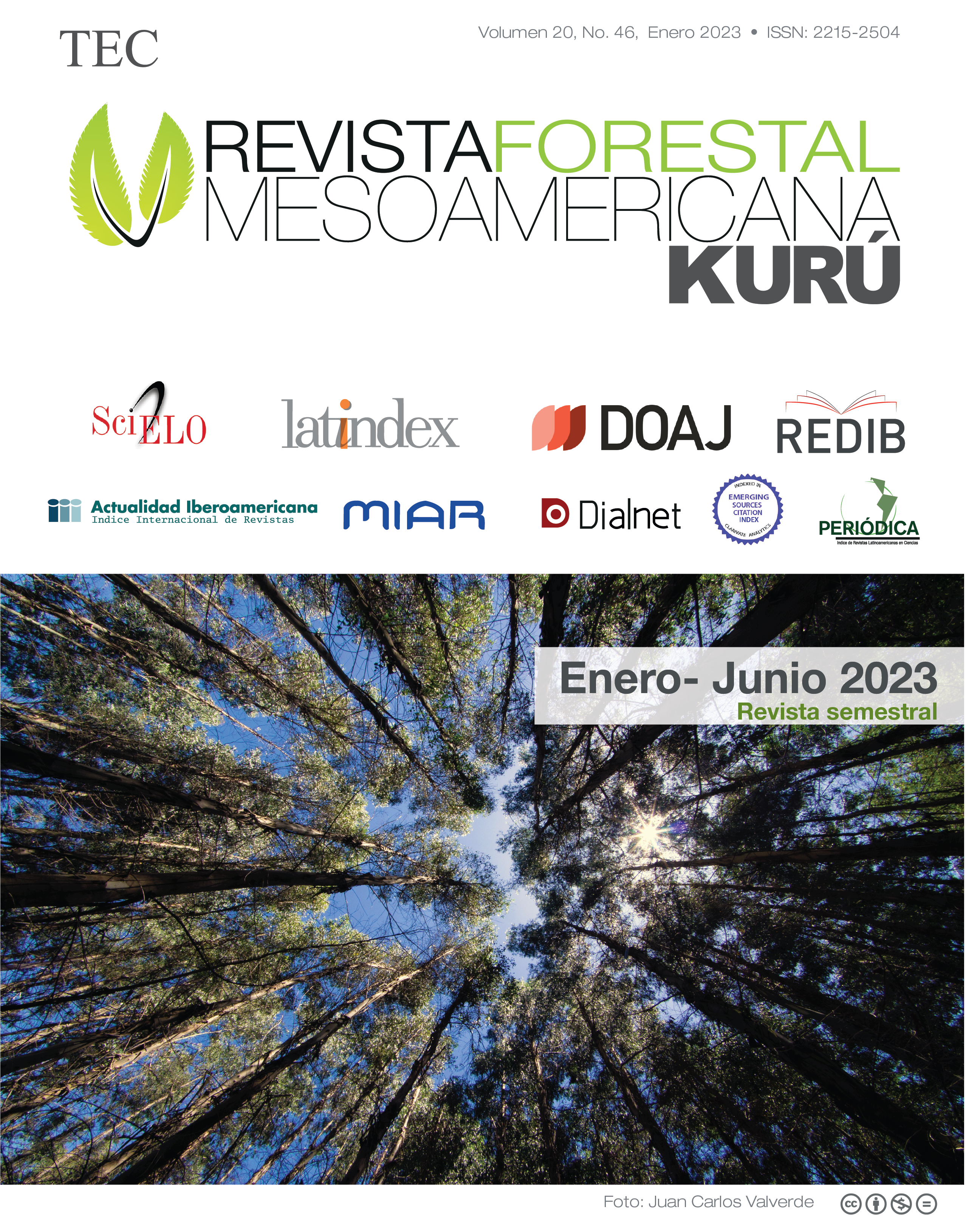Optimization of controlled pollination techniques in Tectona grandis, Linn f.
Main Article Content
Abstract
Teak is one of the most commercially reforested forest species in the tropical and subtropical world, which has motivated the development of genetic improvement programs in the region, requiring controlled crossing protocols to recombine individuals with superior characteristics to obtain high-yielding genotypes in commercial plantations. The present study aimed to optimize controlled pollination techniques for this species. Several trials were conducted to determine the effect of emasculation, the determination of the best pollination tool between brush and pipette tip, the effect of style cutting, as well as the development of panicle isolation methods. The trials were repeated numerous times over two years, using pollen from different sources. In none of the trials was it possible to determine significant statistical differences between the pollination techniques evaluated. However, differences were found between repetitions over time, suggesting that climatic conditions affect the efficiency of teak pollination. The best pollination technique in teak does not require emasculation, the brush is the simplest and most operationally efficient tool, and cutting the pistil does not significantly increase the number of fruits obtained. The fertilization rate with controlled pollination can reach up to 90%. However, environmental effects and possibly the action of postzygotic self-incompatibility mechanisms reduce the number of effective fruits by more than 25% at the end of the reproductive period.
Article Details

This work is licensed under a Creative Commons Attribution-NonCommercial-NoDerivatives 4.0 International License.
Al enviar un artículo a la Revista Forestal Mesoamericana kurú (RFMK), los autores ceden los derechos patrimoniales a la editorial de la RFMK una vez su manuscrito haya sido aprobado para publicación, autorizando a la RFMK a editarlo, reproducirlo, distribuirlo, y publicarlo en formato físico y/o electrónico, incluido Internet. La titularidad de los derechos morales sobre los trabajos objeto de esta cesión seguirá perteneciendo a los autores.
Este obra está bajo una Licencia Creative Commons Atribución-NoComercial-SinDerivadas 4.0 Unported.


